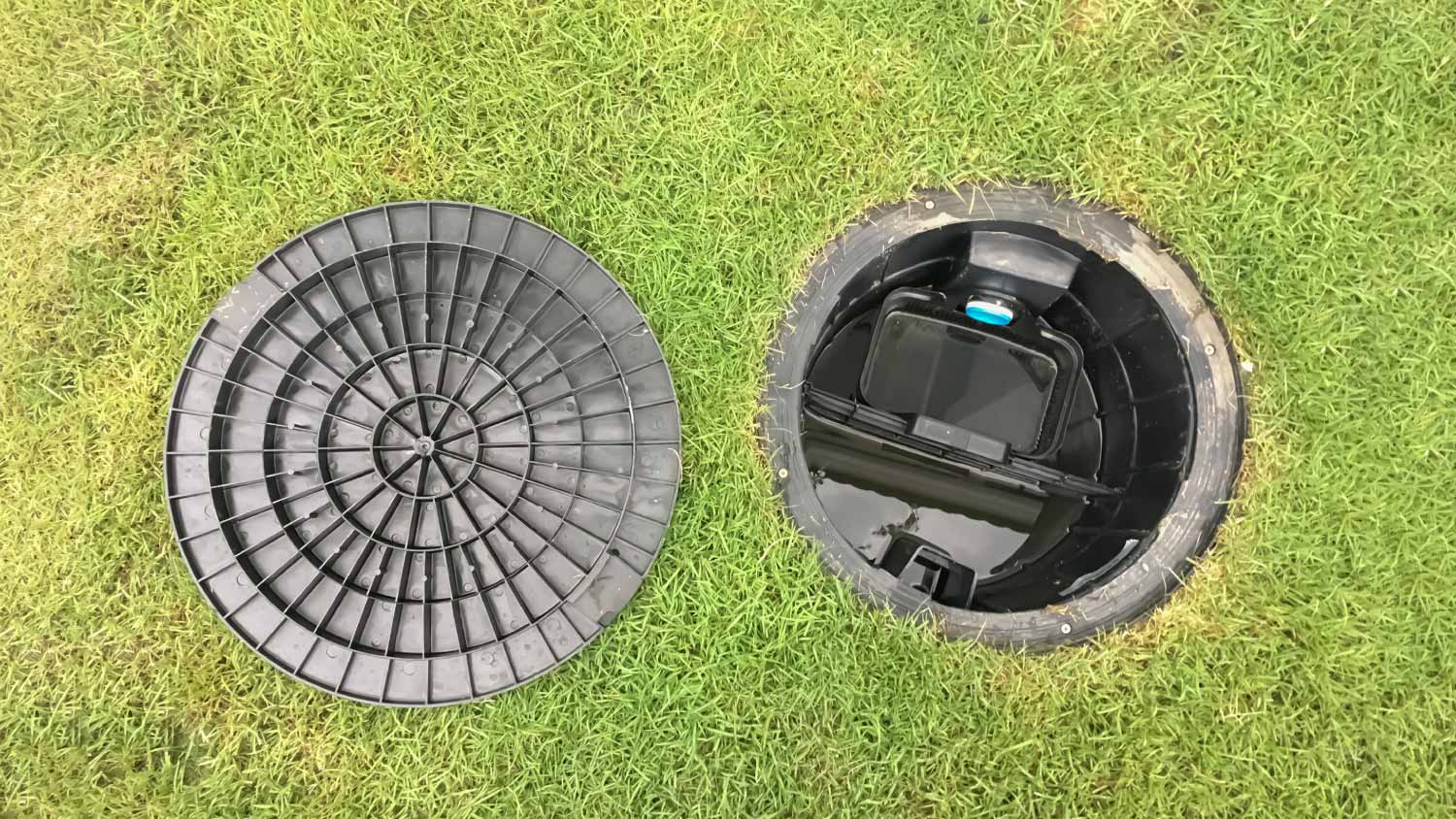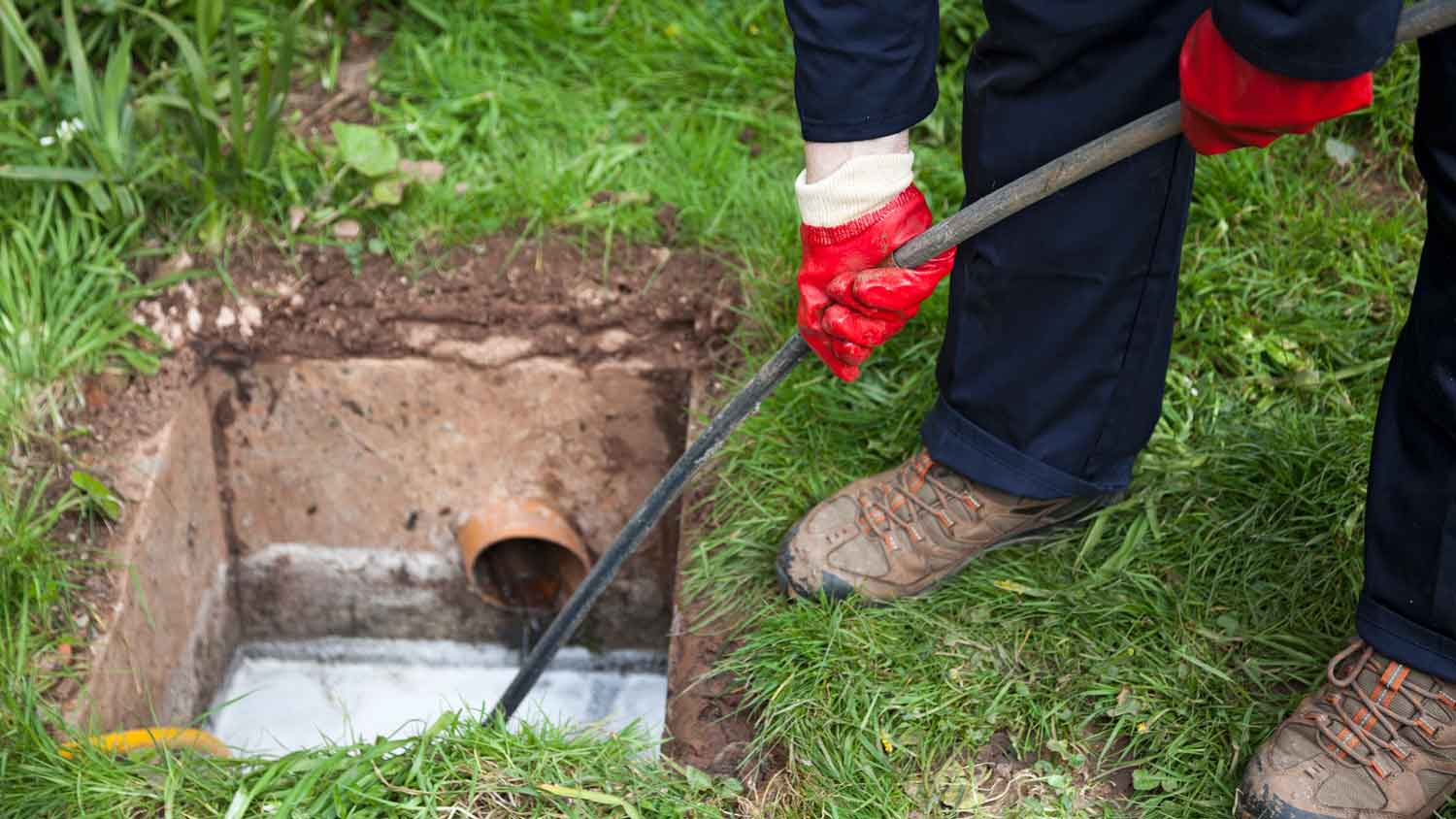
Need to know what sewer line replacement costs? This guide will help you prepare to budget for sewer line replacement done by local contractors.
Converting a cesspool to septic costs between $4,500 and $11,200, or $6,300 on average. The final cost depends on professional labor prices in your area and the tank’s size.


The biggest cost factor is the type of septic system you’re upgrading to. An anaerobic system is the most affordable, at less than a third of the cost of an aerobic system.
Other important considerations, such as the tank size and the excavation needed for your drain field, can swing your total by thousands of dollars.
You’ll need a percolation test before you can make the switch. If your perc test fails, your installation cost could skyrocket with added land prep costs.
Factor in the cost of ongoing maintenance, pumping, and inspections to avoid surprise costs down the line.
If converting your cesspool to a septic system is on your home improvement Bingo card, congratulations—we’ve got cost estimates as your prize. Converting a cesspool to a septic system costs between $3,600 and $20,000. On average, you’ll spend about $6,300 for this process, but it offers a more eco-friendly sewage management option that can last for decades.
Between types of septic systems, labor, permit requirements, and more, the cost of replacing a cesspool with a septic tank can vary widely. See below how these factors can influence the final bill.
I had another company design my septic system replacement, but Paul re-designed it to avoid having to remove a 50+ ft tall tree and added a drainage system for the water from the gutters. The old no-longer-up-to-code 2-cesspool septic system was replaced by a drainfield and Ecoflow septic tank. The work was done on the days I was told workers would be here (unlike the company that drew up the first set of specs), and Paul and Jon were always friendly and great to work with.
The cost of replacing a cesspool tank with a septic tank can depend on the type of septic system you opt for and ranges from $2,000 to $20,000. Many lower-end options, such as conventional or anaerobic systems, can meet the demands of single-family homes. High-end options can be complex and specialized and as such have higher costs associated with engineering and labor.
| Septic System Type | Average Cost |
|---|---|
| Conventional | $5,750 |
| Anaerobic | $4,500 |
| Aerobic | $15,000 |
| Eco-friendly wetland | $11,250 |
| Pressurized | $7,775 |
| Gravelless | $7,000 |
| Evapotranspiration | $12,500 |
| Recirculating sand filter | $8,000 |
Reflecting the estimated demand on the septic system, the size or capacity of your septic tank typically correlates to the size of your home and the number of bedrooms. For example, a one-bedroom home could function with only a 500-gallon tank, while a six-bedroom home may need a 1,500-gallon tank, making the cost range from $500 to $2,500 just for a tank.
| Tank Size (Gallons) | Home Size (Number of Bedrooms) | Average Cost |
|---|---|---|
| 500 | 1 | $500–$900 |
| 750 | 2 | $700–$1,200 |
| 1,000 | 3–4 | $900–$1,500 |
| 1,200 | 5–6 | $1,200–$1600 |
Labor is one of the biggest expenses of converting a cesspool to a septic tank. Depending on the complexity, you can pay anywhere from $1,500 to $4,100 for a local septic tank installer to do the job. Keep in mind that, compared to a new system installation, septic tank replacement costs will likely be higher if your contractor also has to perform ground repair and remove the original cesspool tank.
Percolation tests, also called perc tests, can cost anywhere from $450 to $1,400 depending on the soil condition and land area. Usually required before you can proceed with a septic tank installation, percolation tests dig holes in the intended leach field area and analyze the soil and drainage of the site. You’ll likely pay on the higher end for the percolation test if it requires a land survey to determine which specific areas to analyze.
Besides assisting with percolation tests, you may need a land survey from an insured professional. Ranging from $330 to $900, land surveys can ensure that your proposed septic system site is on your property and falls within other legal parameters. Although not technically required, land surveys can save you from expensive and unexpected costs later on if you discover your septic system was improperly installed.
Most municipal health or environmental departments require you to obtain a permit before converting from a cesspool to a septic system. The costs for septic system permits range from $330 to $2,000, and you’ll have to renew the permit every few years and stay up-to-date with any changing septic system requirements.
Your septic tank’s materials can have a big impact on the final septic system cost as well as its lifespan. Lower-end materials, such as plastic, may be more cost-effective up-front but more prone to damage and premature wear. In comparison, fiberglass tanks are tougher but more costly than plastic tanks.
Below, see common materials used in septic systems and their cost range (labor not included):
| Septic Material Type | Low Cost | High Cost |
|---|---|---|
| Plastic | $700 | $2,500 |
| Fiberglass | $1,450 | $2,000 |
| Concrete | $750 | $2,000 |
Labor often accounts for between 50% and 70% of the overall installation cost, and a number of factors can play into the final bill. Certain septic systems are more complex and require both greater expertise and more time to install, translating into more expensive labor. A larger system simply takes more time and effort, and as such is more costly. If you live in a remote area, you may also be responsible for costs relating to transportation with heavy equipment and materials.
You should also consider that site prep is often labor-intensive and can be a major factor in labor costs. Depending on the type and size of the system, site prep can include excavation costs of up to $300 per hour, land leveling of up to $5,000, and leach field repair of up to $5,000. Poor soil conditions can also affect the time and effort required for site prep.

Once your septic tank is installed, expect to pay between $150 and $1,000 to address any maintenance or repair needs every few years.
To keep your septic running smoothly and maximize its lifespan, it’s important to perform regular maintenance. The average septic system should be inspected by a professional at least every 3 years, with costs ranging from $150 to $450. Depending on your household size and tank size, the septic tank should be pumped every three to five years.
Septic tanks undergo heavy demand, and the occasional repair is almost inevitable. Depending on the extent of damage, average repair costs range from $600 to $3,000. Getting regular inspections and performing maintenance can help you avoid costly repairs.
Unless you’re a professional yourself, it isn’t recommended to try converting a cesspool to a septic tank on your own. Engineering and installing a septic tank is not only labor-intensive and requires a lot of heavy machinery, but it also requires extensive knowledge and experience to perform properly. Besides leading to costly mistakes, inexperienced DIY installation could result in unsanitary groundwater contamination and sewer backups.
If you’ve purchased a home with a cesspool and want to convert it to a septic system, the costs can vary widely. These strategies can help you manage your budget.
Talk to multiple septic system contractors before proceeding with the installation. Many contractors offer different pricing options, services, qualifications, and experience, and considering several options helps you to make an informed and cost-effective decision.
Regulations are in place for a reason, and neglecting them could result in expensive fixes and fines. Make sure to get a percolation test, obtain the correct permit, and comply with all local regulations to avoid unnecessary costs.
Regular maintenance and repairs not only help your septic system perform better but can also extend its lifespan. Avoid premature wear or replacement by getting inspections and maintenance services at recommended intervals.
Home is the most important place on earth, which is why Angi has helped more than 150 million homeowners transform their houses into homes they adore. To help homeowners with their next project, Angi provides readers with the most accurate cost data and upholds strict editorial standards. We extensively research project costs to develop the pricing data you see, so you can make the best decisions for you and your home. We rely on reputable sources, including the U.S. Bureau of Labor Statistics, academic journals, market studies, and interviews with industry experts—all to ensure our prices reflect real-world projects.
Want to help us improve our cost data? Send us a recent project quote to [email protected]. Quotes and personal information will not be shared publicly.
From average costs to expert advice, get all the answers you need to get your job done.

Need to know what sewer line replacement costs? This guide will help you prepare to budget for sewer line replacement done by local contractors.

The average cost to connect to a public sewer line can vary depending on the linear foot, piping material, local regulations, and more.

If it’s been there for a while, it can be hard to find the septic tank in your yard. Learn how much it costs to locate a septic tank with this guide.

An unpleasant smell in your house may signal that your sewer main needs to be cleaned. Ask your plumber these sewer questions before the scent gets worse.

What is a drain field? Understanding this key element of home septic systems will help you detect issues and prevent damage before it’s too late.

To unclog a sewer line, you may need to access your septic cleanout. If so, you might wonder: How do I find my septic tank cleanout? Find out in this guide.